
views
Goal-Setting
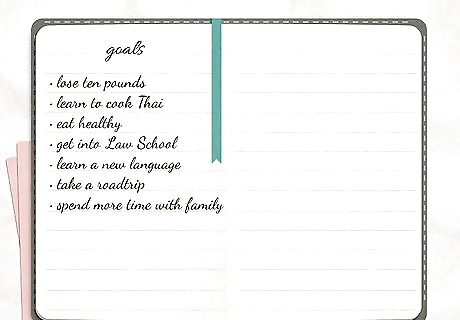
Make a list of the major goals you want to accomplish this year. Imagine yourself in a year from now and think about everything you’d like to happen. Visualize the future and write down everything that comes to mind that you’d like to have accomplished to give yourself a starting point as you work to come up with goals. Don't be afraid to challenge yourself with ambitious goals, but keep it reasonable. Pick a goal that’s just beyond something you feel you can comfortably attain. For instance, “I want to be an astronaut in a year” may be a bit of a stretch, but something like, “I want to write a draft of a novel” could be within reach. Really have fun with it! For example, maybe you want to learn photography this year. That’s a great place to start mapping out goals. You can use pen and paper or type out your vision in a word processor or note-taking app.
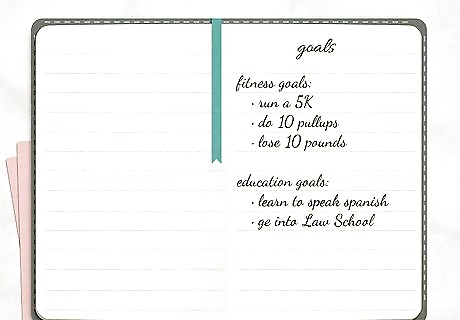
Separate the goals on your list into related groups. Organize the list into specific groups such as financial, career, health, and artistic. Group all of the things you’d like to accomplish in the year with similar or related goals. For instance, you could have a group of fitness goals that include running in a 5K, being able to do 10 pullups, and losing 10 pounds (4.5 kg). Keeping your goals organized can help you better manage them. They can also help you structure your year. For instance, if you have a goal to get a promotion at work, you could start by arriving to work on time every day, completing a big project, then asking for more responsibilities. As you progress, you’ll get closer and closer to your bigger goals.
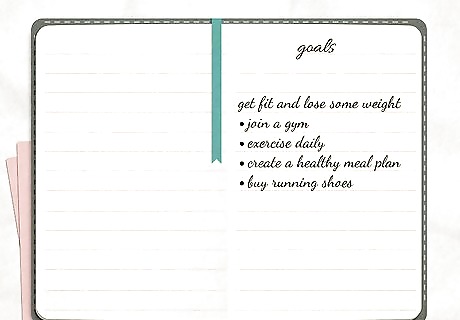
Make a list of tasks for each of the goals you want to accomplish. Write 1 goal on a blank page and write down every task you need to complete in order to accomplish that goal. Focus on one goal at a time and really think about everything you need to do to make that dream a reality. Spend time with each of them until you’ve come up with a solid list of tasks, then create a new document for the next goal until you’ve mapped them all out. For instance, if your goal is to get fit and lose some weight, you could make a list of tasks that could include things like, “Join a gym, set aside time each day to exercise, create a meal plan to eat healthier, buy running shoes,” and so on. It could even be helpful to run a quick online search to see what it takes to do something. If you’ve never run a marathon before, for example, you can check to see what it takes to make it happen.
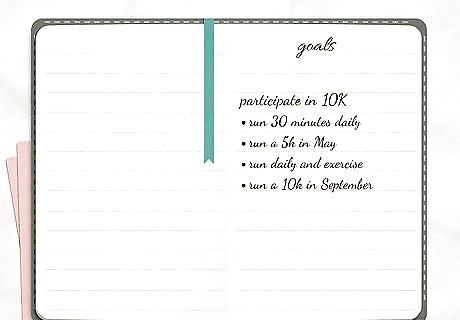
Set deadlines for each of your tasks. Plan and schedule a set time for you to have completed each of the smaller tasks and steps. Give yourself a deadline to keep yourself focused on chipping away at the larger goal. For example, if you want to participate in a 10K next year, you could set a date to run for 30 minutes straight in a few weeks, and then run a 5K a few months from now. Eventually, you’ll be ready to take on your ultimate goal of a 10K. Sometimes things happen, and you need to adjust your deadlines. That’s okay! Allow yourself to make adjustments and don’t feel discouraged.
Staying on Track

Start every day by writing down 3 things you hope to accomplish. Every morning, take some time to jot down at least 3 total tasks that are a priority that you want to complete that day. Even if you don’t complete them, the process of prioritizing and focusing on your larger goals on a daily basis can help keep you on track. Your 3 priorities could be related to a single goal, or 3 tasks related to separate goals. For instance, you could aim to go for a run, look at hotel rates for a future trip you have planned, and read a chapter of a book if you have a goal to read more. For example, if you have a goal to lose 15 pounds (6.8 kg), you could write down daily tasks like: Take a walk after lunch Eat a piece of fruit for an afternoon snack Avoid have a pastry in the break room

Review your goals once a week to see your progress. Check-in with yourself on a regular basis to see how you’re progressing toward your goals. Review the progress you made in the previous week—what worked, what didn’t work? Come up with actionable steps you can take in the coming weeks and months to continue to advance toward your ultimate goals. Set aside a time each week that works for you. For instance, you could schedule an hour or so every Sunday morning to review your progress.

Share your plans and goals with a partner to stay motivated. They don’t need to be someone who has the same goal as you, but finding a partner can help you feel supported and motivated to accomplish your goals. Check-in with them whenever you make progress toward your goal or whenever you’re struggling with something and ask them how they’re doing with their own goals. It may help you stay on track. Studies suggest that something as simple as texting a friend when you make progress toward your goal can triple the rate of success.

Picture yourself accomplishing a goal to make it feel easier to do it. Imagine that you’ve already made the change or reached the goal that you set. If you can imagine you’ve already done something, it can trick your brain into thinking that what you need to do is very possible. Psychologists sometimes refer to this process as “encoding prospective memories.” So for example, if your goal is to learn to play the guitar, instead of thinking about all the practice you need to do and lessons you need to take, picture yourself jamming on a stage or playing a song for a friend. It can make it feel more attainable—because it is!

Keep advancing toward your goals even if you face setbacks. Here’s the thing: change involves failure, obstacles, and setbacks. It takes work to accomplish a goal, especially if it’s an ambitious one. If you can anticipate that you’ll have failures, you can feel less discouraged and make changes that help you keep pushing to accomplish your goals. For instance, if your goal is to eat healthier, but you “accidentally” indulge in a double cheeseburger, it’s not the end of the world. Think of it as a setback you can use to learn from and come up with ways to avoid slipping up in the future. Research shows that successful people don’t have fewer setbacks than other people. The key difference is they didn’t give up whenever they were faced with an obstacle.

Celebrate your wins whenever you accomplish a goal. Treat yourself to a fancy dinner or spoil yourself with a new outfit whenever you hit one of your goals. You’ve worked hard and you deserve it! Use the potential for celebration as motivation to keep working on your goals. Just think about how sweet it’ll be when you accomplish them. Try not to celebrate with activities that can be detrimental toward your goals. For instance, if you’re trying to travel somewhere, don’t splurge too much and spend the money you’ve saved for your trip.

Tweak your goals if you need to make adjustments during the year. If you find that you no longer want to achieve a certain goal, you want to change it slightly, or you need to alter it for other reasons, go for it! If something just isn’t working, allow yourself to make adjustments that benefit you and your life. You don’t need to feel guilty if you don’t accomplish a goal you set for yourself. Maybe it just wasn’t the right time, or you had something come up that made it impossible. You can always try again in the future. Flexibility can be good for your goals and your sanity. For instance, if you wanted to try to visit Ireland this year in the summer, but it just isn’t in the cards, you can maybe push it back to a winter trip and work toward making that happen.
Organizational Tips
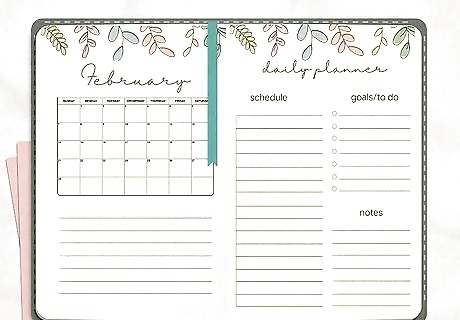
Choose a traditional planner to manage your tasks and schedule. A traditional planner is a useful tool you can use to set deadlines, organize your tasks, and schedule your days, weeks, and months. Choose a single planner to keep all of your info in one place so you can easily find and add to it. Using a planner can help you better manage your time and improve your productivity. Most planners have weekly and monthly calendars you can use to schedule your days and set deadlines for yourself.

Use an organizational app for a convenient digital option. If you’re more tech-savvy and like using digital calendars and organizational tools like Trello or Monday.com, that’s fine too. Download an organizational app from your smartphone or tablet’s store. Use it to set your schedule, store information, and set deadlines for yourself. Organizational apps can be useful if you need to write down tasks on the go. Some apps, like the iPhone’s Note app can sync across multiple devices. So you can add to it from your phone and computer. Many apps can also give you reminders or let you know when you’re due for an appointment you set on your schedule.
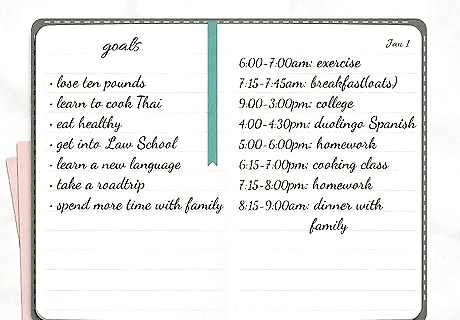
Use time blocking to help you organize your schedule. Time blocking is an organizational strategy that can help you stay more organized and focused on completing a specific task. Rather than spending huge stretches of time on a single task or putting something off until you can get to it, schedule 2-3 hour chunks of time where you concentrate on completing a single task. For instance, if your goal is to grow your social media following, you can schedule a block of time to create content, one to write blog posts, and another to schedule posts. It doesn’t necessarily need to be a full 2-3 hours. Some tasks can take a quick 30 minutes, right? The key is to focus on one task at a time and avoid spending too much time on a single task.
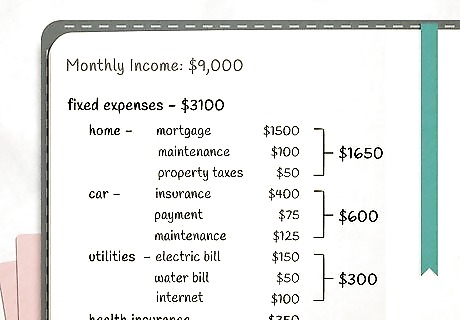
Budget your money to keep your finances in order. Make a budget spreadsheet and input your income. Add all of your expenses as well, including variable expenses like groceries and gas. If you’re saving up for something, set aside excess money so you can work toward that goal. No matter what your goals are, keeping your finances organized can make them possible and keep you from being stressed about money.
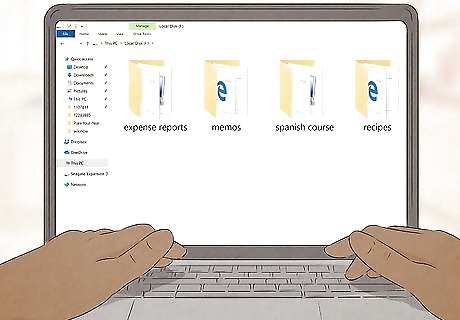
Create folders on your computer to organize documents. Increase your productivity by organizing your documents. Make folders on your computer that support the way you structure your business and then keep the related documents in the folders so you can easily find them when you need them. For instance, you could have a folder for expense reports and internal memos to keep your workflow organized. You could also have a folder for a specific goal, such as learning a new language where you can keep documents and materials related to accomplishing that goal.




















Comments
0 comment